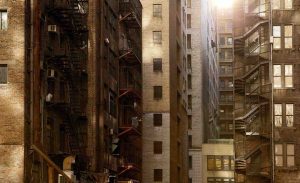 If you rent your home in the San Francisco area, you most likely are aware of San Francisco’s Rent Control Ordinance. Even if you currently rent or you are thinking of coming to the area and renting, there are many specifics of the ordinance you may not know about. Consider the following when looking for a new place to live or if you feel like your current landlord is not following the law.
If you rent your home in the San Francisco area, you most likely are aware of San Francisco’s Rent Control Ordinance. Even if you currently rent or you are thinking of coming to the area and renting, there are many specifics of the ordinance you may not know about. Consider the following when looking for a new place to live or if you feel like your current landlord is not following the law.
What Does the Ordinance do?
The San Francisco Rent Ordinance provides a number of protections to tenants who rent or lease a dwelling. First and perhaps foremost, the law regulates the amount that rent can be increased annually for specific dwellings in specific situations. To this end, the law also allows only a certain amount of capital improvement costs to be passed on to the tenant by the landlord. It also allows the tenant to petition the Rent Board for a decrease in rent if the landlord has failed to provide services that have been agreed upon or that are required by law. This includes if the landlord has not maintained the premises in a habitable manner or if unit has uncorrected housing code violations. Secondly, the law regulates the circumstances under which a tenant may be evicted.
What Dwellings Does the Law Cover?
First, it is important to determine what dwellings are actually covered by the ordinance. Generally, the ordinance covers rental units that had a certificate of occupancy issued prior to June 13, 1979. There are several exceptions to this, however, including tenants who live in dwellings that:
- Were issued a certificate of occupancy after June 13, 1979
- Are considered subsidized housing
- Are residential hotels and the tenant has less than 32 days of continuous tenancy
- Are dormitories, hospitals, monasteries, or nunneries or
- Are single family homes (but see below for exceptions to this)
It is also important to note that in many of the above instances, the rent control portion of the law may not apply, but the evictions regulations may still apply.
Single Family Homes
Typically, tenants of single family homes or condos that moved in after January 1, 1996 do not have full rent control protections. There are exceptions to this rule, however, including:
- Tenants who moved into a dwelling that was vacant because the prior tenant had been evicted either through a fault or a no-fault eviction
- Tenants who move into a dwelling that had housing code violations that were cited and uncorrected for at least six months before the vacancy
- Tenants who live in a condo in which the subdivider of the building still owns the condos unless you live in the last unsold condo and the subdivider lived in the unit for at least a year after subdivision
Rent Increases
Landlords who rent or lease rent-controlled units are allowed to raise rents annually. However, the amount of the increase is controlled by the law. The rent increase is based on the Bay Area Consumer Price Index, which is a calculation of inflation in the area. Landlords are also allowed to pass on capital improvement costs and operating and maintenance cost increases after petitioning the Rent Board and receiving approval. Landlords can also pass along Pacific Gas and Electric cost increases when they are paid by the landlord. Finally, the landlord can also include a portion of the Rent Board fee, which serves to fund the Board. There are complex rules and regulations in place that specify how and when these increases take place.
Eviction
The law also provides for rules that govern “just cause” evictions and protect tenant rights. There are 16 of these and a few examples include:
- Nonpayment of rent, habitual late payment, or frequent bounced checks
- Breach of a term of the rental agreement that has not been corrected after written notice
- The tenant has refused to give the landlord access to the unit after being given notice to cease the behavior
- Sale of a unit that has been converted to a condo
- Illegal use of the unit (which may not be used as a reason to evict a tenant from what is otherwise an illegal residential unit)
- Demolition or removal of the unit from the rental market
The ordinance also provides for relocation payments in the event that a tenant is evicted in certain cases. Unfortunately, evictions occur in the name of just cause frequently when, in fact, the reasons are not necessarily as stated.
San Francisco’s Rent Control Ordinance was put in place to ensure that tenants are not abused by unscrupulous landlords. It is complex and complicated in both theory and in application. If you live in the San Francisco area and you suspect your landlord is violating the law, you are protected by the law. Give the skilled and experienced legal professionals at Brod Law Firm a call today at 800-427-7020 or click here to set up your initial consultation to see what they can do to help you protect your rights as a tenant.
(image courtesy of Todd Quackenbush)
 San Francisco Injury Lawyer Blog
San Francisco Injury Lawyer Blog

